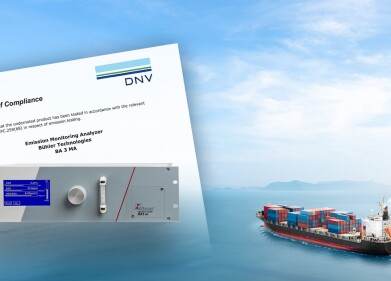Measurement and testing
What Are the Different Petroleum Testing Methods?
Aug 17 2022
From determining market price to meeting environmental regulations, petroleum testing methods are integral to the oil industry. Analysts rely on hundreds of different methods to characterise petroleum and evaluate the unique properties of samples. Tests offer more information on physical characteristics such as viscosity, density and boiling point range, as well as concentrations of alkanes, aromatic hydrocarbons, asphaltenes and resins.
Want to know more about how oil is analysed? Read on to find out more about the different petroleum testing methods used in the oil and gas industry.
The role of ASTM International
ASTM International was founded in the late 1800s and publishes technical standards for a wide range of products, services, systems and materials. The current database includes hundreds of petroleum testing methods designed to make oil analysis easy, efficient and reliable.
In the Guide to ASTM Test Methods for the Analysis of Petroleum Products, Liquid Fuels, and Lubricants - 3rd Edition, the author lists short descriptions of more than 600 petroleum tests. This includes more than 130 new test methods and more than 70 revised tests. Comprehensive and easy to navigate, the guide is used by oil industry professionals around the world, including analysts, producers, refiners, marketers, regulators and technologists.
Below, we take a closer look at some of the petroleum testing methods featured in the guide:
Testing acidity in aviation turbine fuels
Petroleum testing methods are widely used in the aviation industry, where maximising fuel efficiency is a top priority. The ASTM D3242-11(2017) Standard Test Method for Acidity in Aviation Turbine Fuel offers guidance on how to calculate acidity levels in aviation turbine fuel, with a range of between 0.000 mg/g to 0.100 mg/g KOH.
Assessing viscosity in engine oils
Viscosity is one of the most important properties analysed in oil assays. The ASTM D4683-20 Standard Test Method for Measuring Viscosity of New and Used Engine Oils at High Shear Rate and High Temperature is an internationally recognised way to measure viscosity using a tapered bearing simulator viscometer. Data helps analysts predict how efficient oil is at minimising friction between moving parts.
Calculating ash content
Ash can compromise the performance of fuels and heighten emissions. The ASTM D482-19 Standard Test Method for Ash from Petroleum Products is used to calculate ash from crude oils, as well as lubricating oils, distillate and residual fuels, gas turbine fuels, waxes and other petroleum-derived products.
The ASTM standards listed above are just a glimpse of the different petroleum testing methods used in the oil industry. Find out more about other methods, including tests used to calculate concentrations of contaminants such as sulphur, calcium and zinc in ‘Petroleum Testing - A Comprehensive Guide’. Or check out 'Recent advances in testing the lubricity of diesel fuel' for a more in-depth look at lubricity testing in particular.
Digital Edition
PIN 26.1 Feb/Mar 2025
March 2025
Analytical Instrumentation - Elemental Analysis for Quality and Process Control at Refineries, for Lubricants and Wear Metals in Engine Oils - Synthetic Lubricants: New Developments - Scaling...
View all digital editions
Events
Apr 08 2025 Birmingham, UK
Apr 08 2025 Kielce, Poland
Apr 08 2025 Ravenna, Italy
Apr 08 2025 Southampton, UK
Apr 08 2025 London, UK



















